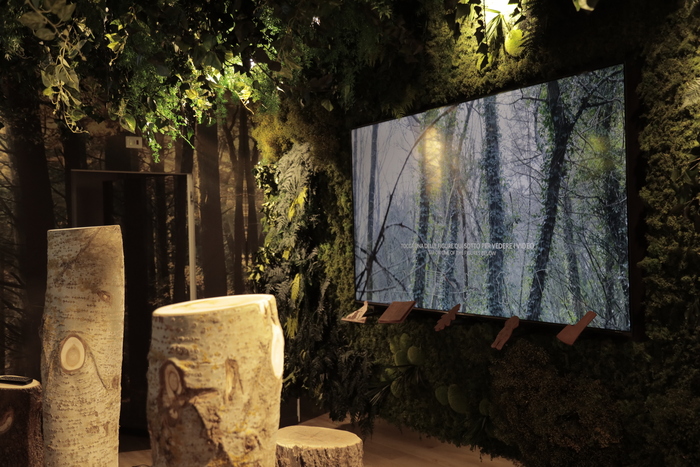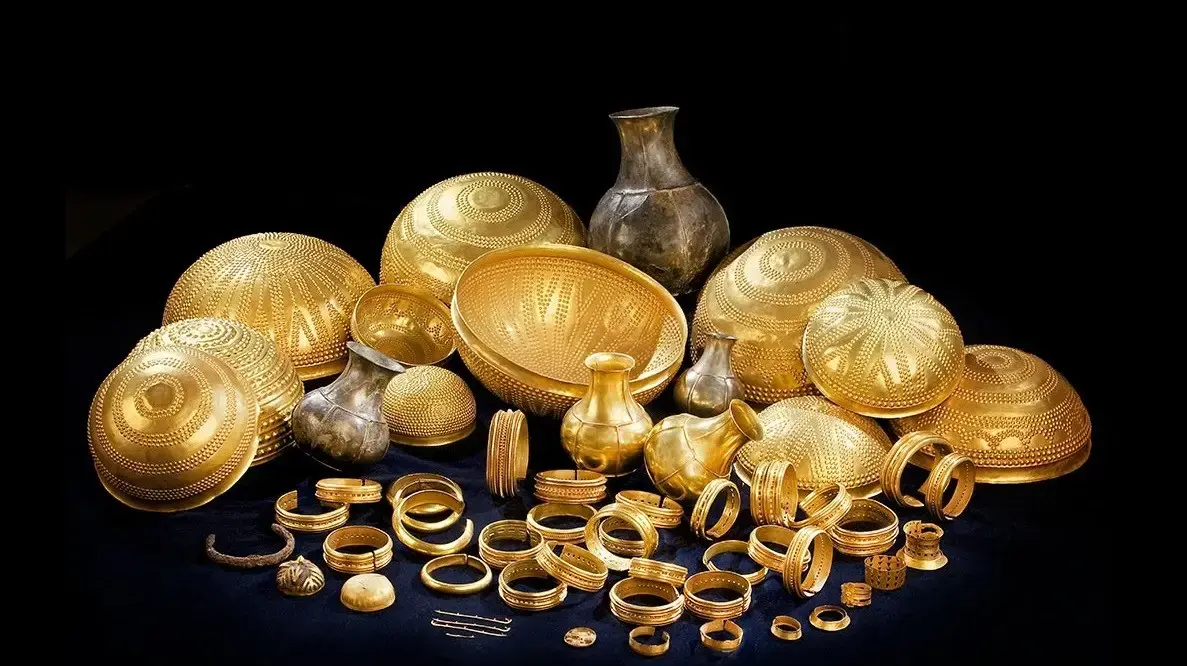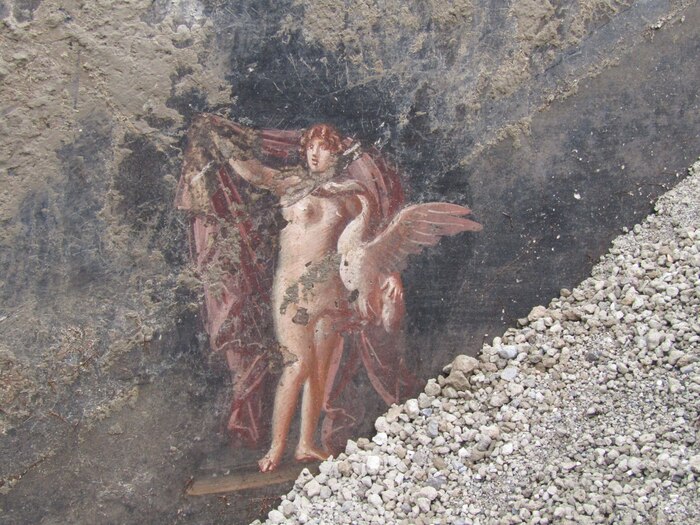The Civil Guard was the first to arrive at El Zaudín Park (Tomares, Seville).
On April 27, 2016, she had just been notified that, in some channeling works, heavy machinery had accidentally come across 19 large ceramic containers inside which tens of thousands of Roman coins could be distinguished.
The excavator shovel had broken 10 amphorae, while another nine were saved from the impact and remained intact and sealed.
The news, with the scarce information available at that time, jumped to the national and foreign media.
Now, the archaeologists and numismatists Francisca Chaves Tristán, Enrique García Vargas, Miguel Ángel Respaldiza Galisteo, Ruth Pliego Vázquez, Blanca Gómez Tubío and Simona Scrivano, from the University of Seville, have made the report public at the National Archaeological Museum
Coin and metal in Late Antiquity: the Tomares or Zaudin Treasure
six years later.
In it, after analyzing 5,899 pieces, they conclude that the number of coins kept in the 19 amphorae was approximately 53,000, that they were buried in a warehouse in a now-defunct Roman villa, that they were all minted between the years 294 and 311 and until the possible reasons why their owner hid them under the porch of the building.
More information
The most luxurious villa in Roman Hispania shows its treasures
The set, after its discovery, was immediately taken to the Provincial Archaeological Museum of Seville, where the nine unbroken amphorae -which are still unopened- were numbered from 1 to 9;
the fragmented ones, but that kept coins inside, with the numbers 10 and 11;
while the other eight containers, destroyed and with their numismatic content scattered in the channeling ditch (22,288 coins) received the name of “ordinary collection”.
In the following days, the technicians returned to the site and recovered another 102 pieces on the construction site.
After the initial expectation, the Archaeological Institute of Seville, the departments of Prehistory and Archaeology, the Department of Nuclear Physics and the National Center of Accelerators of Seville, all from the University of Seville, coordinated efforts to investigate the monetary set.
One of the amphorae with Roman coins found in Tomares (Seville). PACO PUENTES
El Zaudín is located in an area of the province of Seville known as El Aljarafe.
It is a plateau about a hundred meters high whose cornice overlooks the Guadalquivir countryside.
The geographical position and the environment make this region a territory inhabited since the Chalcolithic, where all cultures have passed and left their mark: groups of dolmens, the Phoenician sanctuary of El Carambolo or the Roman city of Híspalis.
The archaeological excavation that was carried out after the discovery included a georadar survey and a stratigraphic survey.
Thus, the remains of a building from between the 3rd and 4th centuries were documented, with excavated walls and buttresses, characteristic elements of granaries or rural warehouses.
the
granary
of El Zaudín was presided over by a portico supported by columns and paved with lime.
Research dates the construction of this warehouse to the 1st century and its abandonment to the 4th century, when the treasure was hidden under the porch.
Two centuries later, the building was dismantled to reuse its materials, without the authors of the dismantling being aware of the amphorae.
Specialists believe that the warehouse was part of an unlocated village.
The Roman villas were, in reality, large agri-food complexes that included, in addition to the aristocrat's home, buildings for production and the residence of the workers.
Roman amphorae found in 2016 in the El Zaudín park, in Tomares.
EFE
To determine how many coins make up the treasure, it has been assumed that all the amphorae kept a similar number of pieces.
Fragmented amphorae 10 and 11 – in which the Andalusian Institute of Historical Heritage introduced micro-chambers – each contain 2,800 coins of the same type of alloy.
Since all the amphorae are the same - they were initially used to store oil - it is estimated that there are 53,000 coins.
They are pieces issued after the reform of Emperor Diocletian in the year 294 ―fiscal, administrative and monetary changes to curb inflation― and there is none that exceeds the year 312.
As the experts only had available for quick analysis the "ordinary collection" - the one that had been scattered in the ditch - they chose 3,000 of its pieces, to which they added 120 collected days later, and another 2,798 from amphora 11, which was broken .
In total, 5,899 coins ready for study, approximately 10% of the treasure.
The report from the University of Seville explains: "A sufficient and reliable percentage to make some preliminary observations regarding the composition of the sample that can be extrapolated to the entire set."
The bronze coins, on a table in the Archaeological Museum of SevillePACO PUENTES (EL PAIS)
The micro-cameras that were introduced into amphorae 10 and 11 confirmed that the pieces had filled the amphorae from the bottom to the top, always without reaching the neck of the amphorae, where they only found soil, without remains of a stopper.
They were thrown into the vessel loose, without being grouped in cloth bags.
They were thus arranged in superimposed horizontal layers.
To avoid air gaps, they were shaken, "which caused the collapse of the peripheral specimens that filled the lateral spaces."
The fact that there is no chronological ordering between the various layers of coins (on the contrary, sometimes the deeper layers are occupied by more recent pieces) confirms the impression that the coins found inside the amphorae were inserted into them in a same moment.
In the 5,899 pieces studied, copies of Diocletian, Maximian, Constantius, Galerius, Constantine, Severus, Maximinus, Licinius and Maxentius have been found.
Likewise, they were minted in the mints of Rome, Carthage, Aquileia, Treveris, Ticinum, Lugdunum, Londinium, Siscia and Ostia.
More scarce are some oriental workshops, such as Alexandria, Cyzicus, Thesalonica, Heraklea, Nicomedia and Antiochi.
The emperor whose name appears on the highest number of coins is Diocletian, and the mint, Carthage.
And why is there more Diocletian than the rest of the Caesars?
Because as the presidents passed by and inflation grew, the weight of the pieces and their percentage of silver decreased.
In fact, in 294, with a pound of silver 32 coins were minted;
in 307 there were already 40, between 307 and 309 48 were made and between 310 and 311, 72. In other words, the owner of the treasure preferred to hoard Diocletian's money, with more silver, than from the rest of the emperors.
On average, the coins had been made of 88% bronze, 4% silver, 3.7% tin and 3.3% lead.
And why so many in the same hands?
The researchers explain that Diocletian's reform was a focus of "political uncertainty and war conflicts between the rulers."
Added to this were territorial and social clashes that would gradually lead to a concentration of property and a devaluation of this type of currency against gold.
"These and other factors explain the high figures of these pieces that only in large numbers could undertake payments of a certain level", which means that to make any important transaction a huge number of coins was necessary.
And more so if you owned an agri-food center, a villa.
The Tomares Treasury is one of the largest monetary collections from the tetrarchic era (two emperors ruling at the same time and their successors) in the entire imperial territory.
“Only surpassed in size by that of Misurata, in Libya, it constitutes a first-order testimony on the monetary circulation at the beginning of the fourth century AD.
C. in the south of the Iberian Peninsula.
Its composition also becomes an immense archive in which to study the vicissitudes (devaluations, changes in weight and modulus) of the economic policy of the emperors of the tetrarchic era, a time when, more than ever, the manipulation of currency was an important economic resource in the hands of public authorities”.
Or what is the same, inflation ate the money of Rome and nothing better, they thought, than minting more money and of poorer quality.
Subscribe to continue reading
read without limits
Keep reading
I'm already a subscriber








